Using the cooking method of browning food, you can enhance the complexity and depth of flavour in your meals. Whether you’re caramelising onions, sautéing vegetables, or searing meat, browning can produce a rich, golden crust on the food’s surface that brings out its natural sugars and gives it a mouthwatering savoury flavour.
This browning process is brought on by the Maillard reaction, which takes place when food is exposed to high heat and can provide a variety of flavours, including nutty, sweet, and savoury. Here, I am sharing my personal experiences and best suggestions to bear in mind when browning food to help you get the most flavour.
1. Choose the right pan
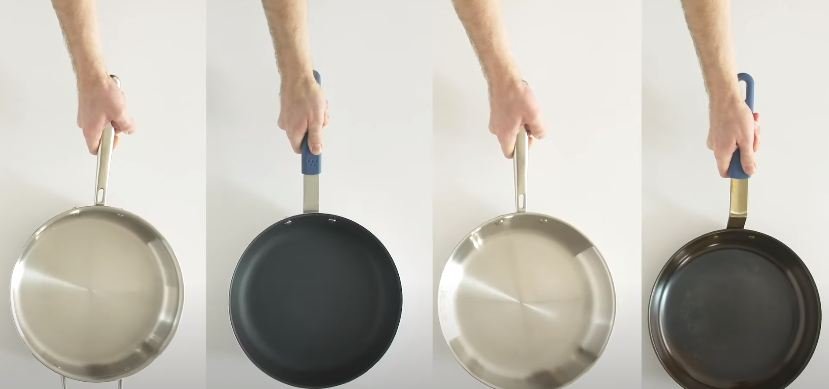
The right pan must be used when browning food to achieve the best flavour. The best pan for browning is one with a hefty bottom made of stainless steel or cast iron since it absorbs heat well and distributes heat evenly. This promotes even browning and eliminates hot patches that could cause uneven cooking.
In my personal experience, using the proper pan for browning food can help it taste better. The kind of pan you use can have an impact on how well and uniformly your food browns, which can then affect how flavour develops. To maximize, the potential of the flavor of your browned food, take into account the material, size, shape, and type of pan that is best suited for the item you are cooking.
2. Preheat the pan
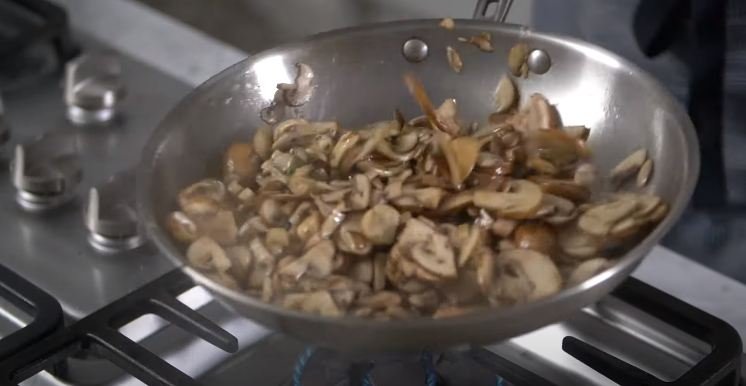
An important step in browning food to enhance flavour is preheating the pan. By beginning with a hot pan, you can guarantee that the food will sear fast, sealing in the natural juices and producing a caramelised crust that adds richness and depth to the flavour profile.
Preheating the pan enables it to heat to the ideal level for browning, which is normally between medium-high and high heat, depending on the recipe. The Maillard reaction, which is in charge of causing browning and the emergence of complex flavours, is aided by this.
The pan should be preheated to help maintain a uniform cooking environment. The food will cook uniformly in a skillet that has been adequately heated, eliminating any hot areas that could cause uneven browning
3. Dry the food
One of the most important steps in browning food to get the most flavour is drying the meal. Moisture on the food’s surface has the potential to thwart the Maillard reaction, which produces the browned food’s savoury flavours and aromatics. You can guarantee that the food browns uniformly and enhances the flavours of the finished dish by thoroughly drying it.
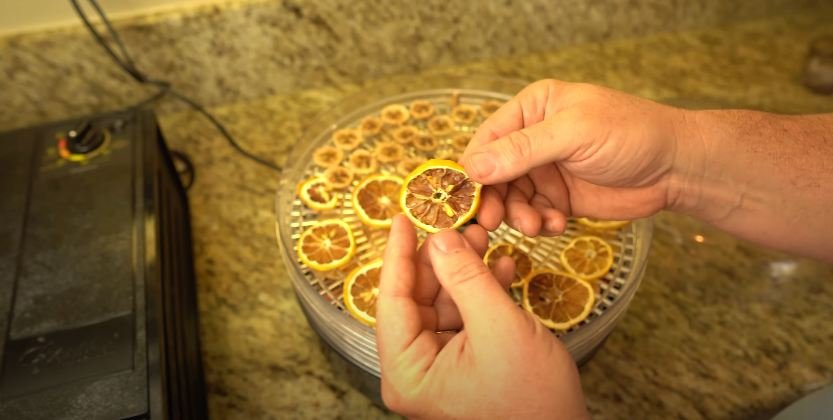
Food can produce steam when put to a hot skillet if it is wet, such as after it has been washed or contains natural juices. The creation of the necessary caramelization and crust may be prevented by this steam, which can impede the browning process. By allowing the food to come into direct touch with the hot pan and fostering the browning process, drying the food before browning helps to remove superfluous moisture.
4. Use oil or butter
Another essential element when it comes to browning food to enhance flavour is the use of oil or butter. These fats help the meal brown by producing a tasty crust and encouraging the Maillard reaction. They also enhance the richness and depth of the dish’s flavour.
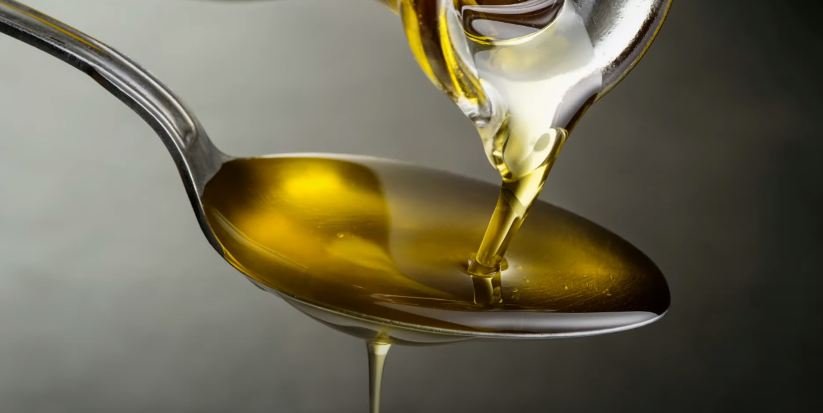
Hot oil or melted butter helps food conduct heat more effectively, resulting in improved browning, when it comes into touch with the meal. The food’s flavour is improved by sear and caramelization, which are made possible by the oil or butter’s assistance in transferring heat to the food’s surface.
In my experience, Oil has a higher smoke point and can sustain the high temperatures without burning, it is frequently used for high-heat browning techniques like searing meat, stir-frying vegetables, or sautéing mushrooms.
5. Don’t overfill the pan
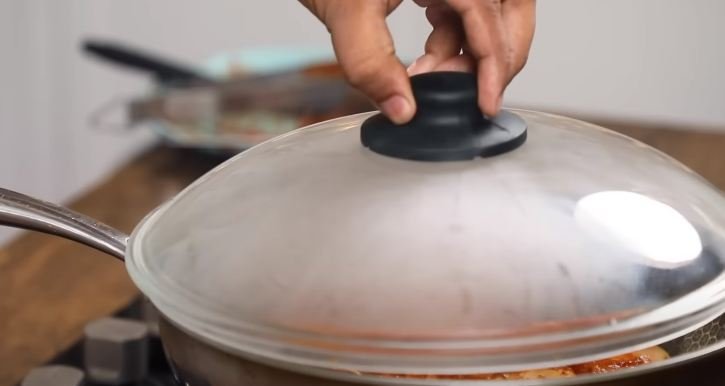
A key technique for browning food to increase flavour is to avoid crowding or overfilling the pan. To ensure that the food cooks evenly and forms a tasty crust while browning, it’s crucial to leave adequate room for it in the pan.
When the pan is too full, the food may leak too much moisture and begin to steam rather than properly brown. The moisture that the food releases can build up in the pan, resulting in a steamy atmosphere that stifles the Maillard reaction and prevents the emergence of rich flavours and crust. Soggy or pallid food that lacks the desired depth of flavour may result as a result.
6. Refrain from stirring too often

Another crucial tip for maximising flavour is to reduce the quantity of stirring or flipping while browning food. Although it may be tempting to stir or toss the food frequently to keep it from sticking or to ensure even cooking, doing so can impede browning.
It is possible for the Maillard reaction to take place when food is left unattended in a hot pan. This complicated chemical reaction is what creates the flavorful scents and flavours that are connected to browning. This process can be disrupted by frequent stirring, which prevents the meal from acquiring a deep flavour and thick crust.
Avoid stirring or flipping the food too frequently for the best browning. Instead, let it cook on one side undisturbed for a few minutes so that it may sear and brown.
7. Add aromatics
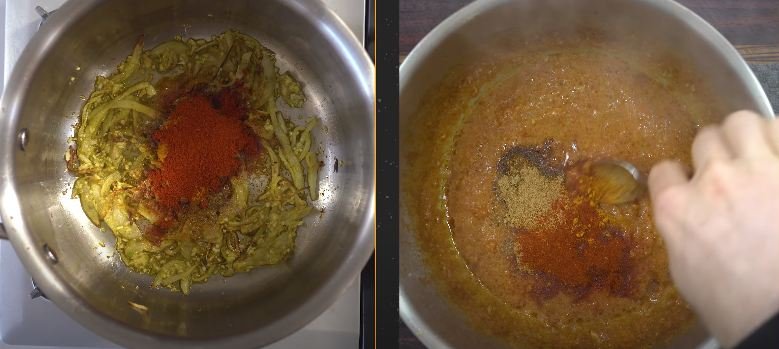
Another great trick for browning food to enhance flavour is to add aromatics. Ingredients called aromatics add potent flavours and scents to a dish, boosting its overall flavour character. They may contain components including herbs, spices, shallots, onions, and garlic.
When browning food, adding aromatics to the pan can bring more flavours to the food. During the browning process, the intense heat of the pan may cause the aromatics to release their natural oils and flavours. These flavours then permeate the dish, giving it a more nuanced and delectable flavour.
Before adding the food, just chop or mince the aromatics and add them to the pan along with the cooking oil or butter.
8. Deglaze the pan
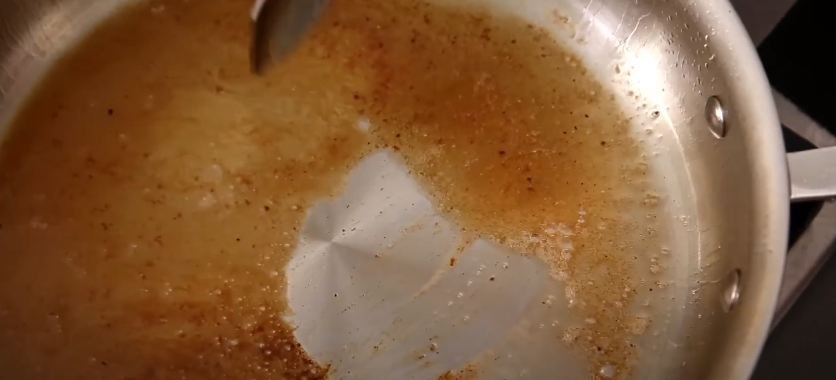
When food is browned, a method called deglazing the pan can improve the flavour even further. Deglazing entails releasing and dissolving the browned particles (fond) that have accumulated at the bottom of the pan after browning by using a liquid, such as wine, broth, vinegar, or even water.
In my test, deglazing enables you to reintroduce the concentrated flavours that were released during the browning process into the dish, giving it depth and complexity.
Always, Keep in mind that browning food is a skill that calls for practise and close attention to detail. You’ll be able to produce nicely browned and tasty foods with practise and time. Have fun cooking!
